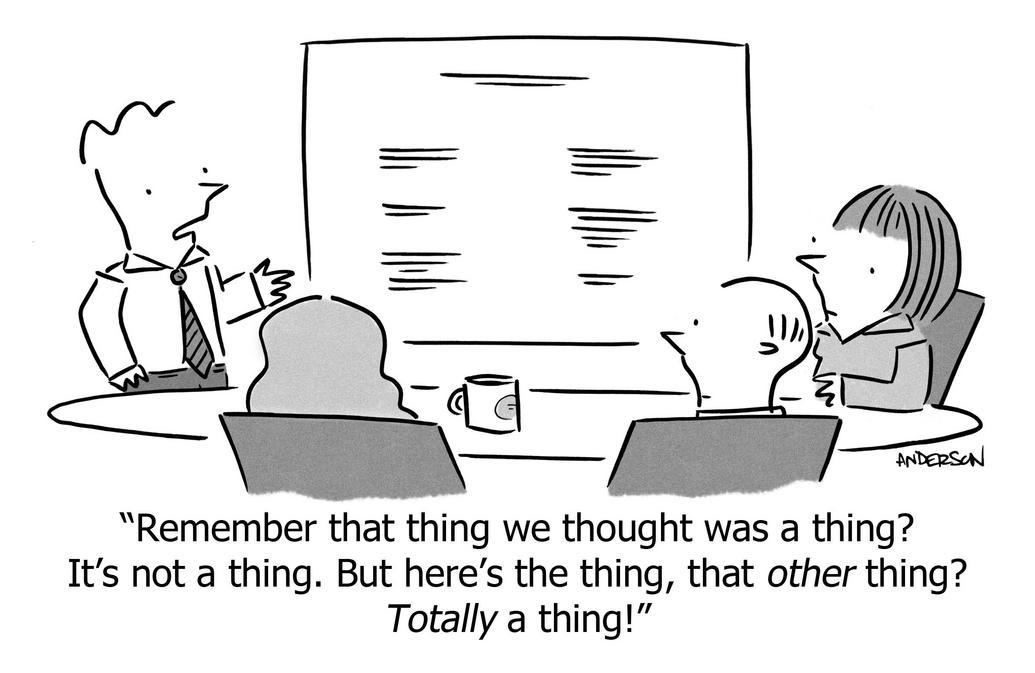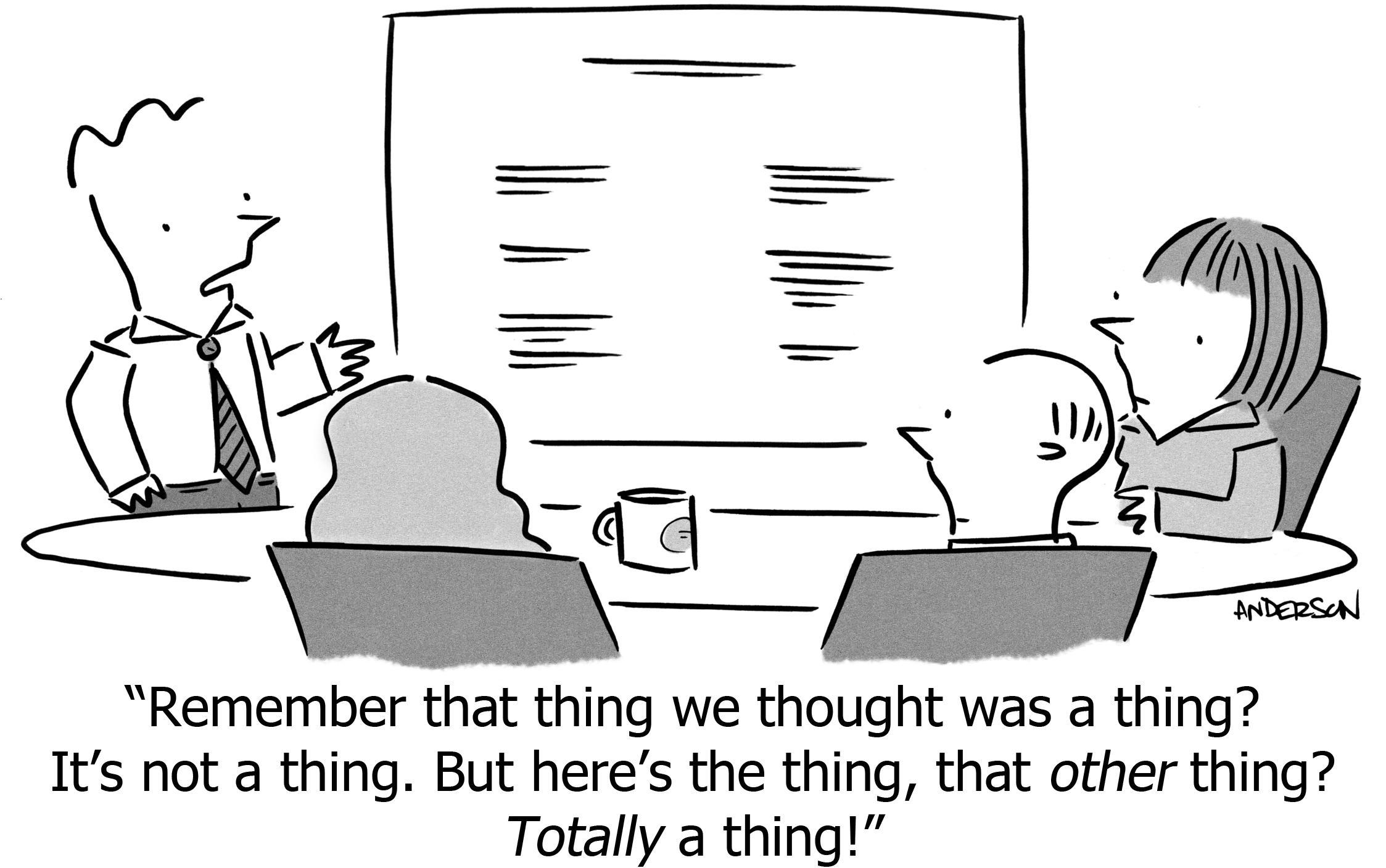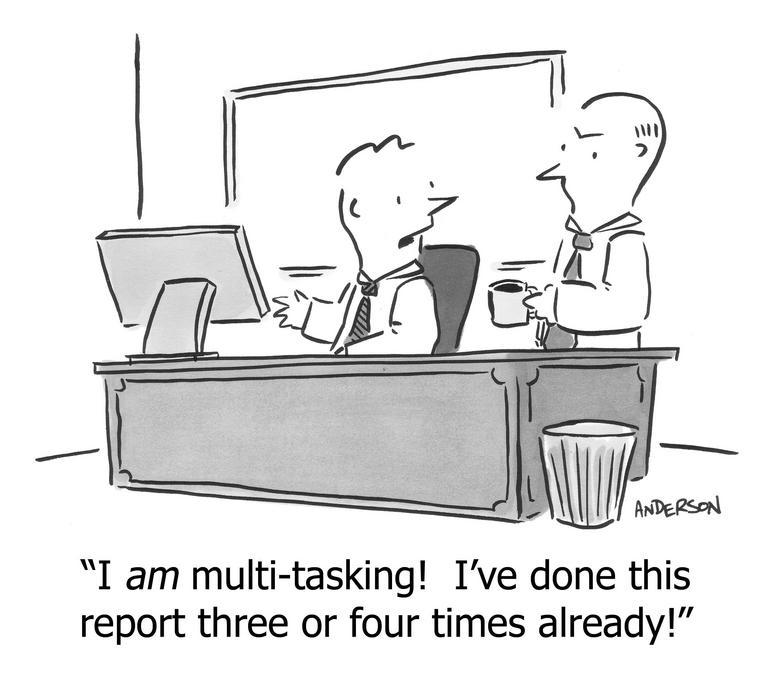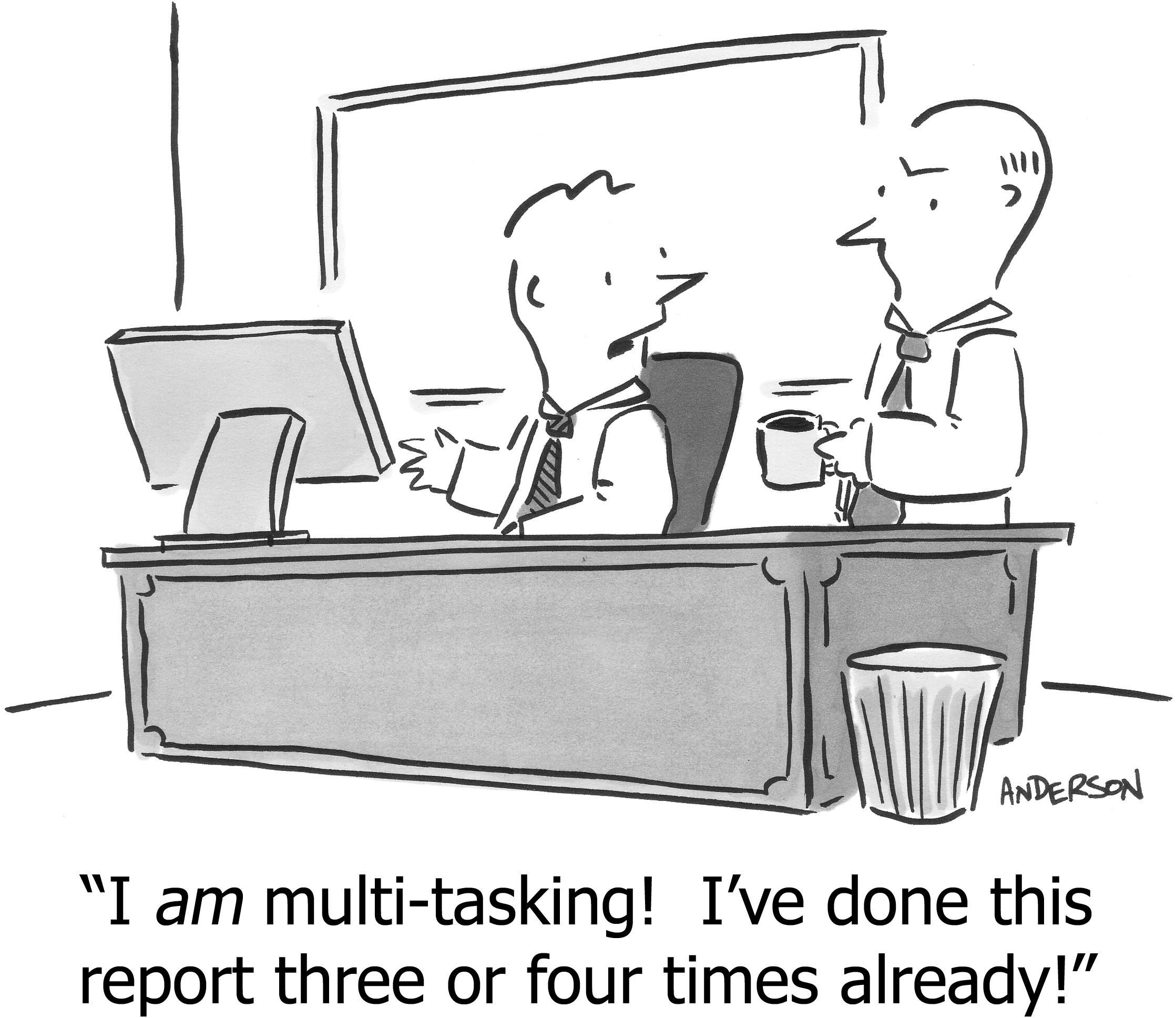Ruthless prioritization while the dog pees on the floor
The prioritization mandate
Time is a zero-sum resource: An hour spent on one thing necessarily means not spending an hour on the entire universe of alternative things. Every minute is a choice. Every choice is a trade-off.
Time is a hard limit. We can maximize productive time through better habits: good sleep, sensible diet, reasonable exercise, restorative rest, reading books instead of doom-scrolling Twitter, sleeker task-management, fewer meetings, shorter meetings. But even here we’re prioritizing within 24 hours each day, choosing how we labor and rest to maximize our effectiveness. There isn’t enough time for more than two big things in your life.
All we have to decide is what to do with the time that is given us.
—Gandalf the Wizard
We need more time. Not 30% more, but 3000% more.
Every company proves that statement with a data repository called “the issue tracker”. We accumulate thousands of valid items over the years: Little ideas that would be nice to do; big features that would create differentiation; bugs that paying customers actually experience; design tweaks that make the team proud of their craft. You will never complete all these; completing even 10% would be a miracle, the ratio worsening every week as more items are added than removed. The better you listen to customers and the more creative your teams, the worse the ratio becomes. You hire more people to get more done, but new talent have new ideas, and the ratio worsens again. Inspiring, and maddening.
So, time is a fixed constraint that limits us to 1%-10% of what we “need” to execute. Unintuitively, the fraction diminishes with scale; we will never defeat it.
The inescapable conclusion is the trite statement that “We must prioritize”—intelligently determining which precious few things we will actually do.
In fact we can’t help but prioritize, even if mindlessly. Since we can only do one thing at a time, whatever we’re doing now is definitionally our “highest priority.” Reading this sentence is currently your highest priority. While “prioritizing” doom-scrolling is obviously faulty decision-making, there’s the more insidious cases of prioritizing things that are fun but only somewhat useful, or of prioritizing things due to necessity but not importance (e.g. paying taxes on time). Indeed, a common complaint of prioritization is that we’re only doing things that happen to have deadlines, instead of things that matter. “Urgent, but not important” tends to win over “Important, but not urgent,” if we’re not paying attention.
Prioritization is a choice, and more often than we’d like to admit, the choice was thoughtless. We’ve all lost a few hours to doom-scrolling or YouTube or TV (if you were born before 1990). Maybe that activity was useful for “restorative rest.” Maybe it was just a poor choice. Maybe we should give ourselves grace. Maybe.
Prior art
There are, of course, myriad prioritization frameworks. On this site alone I’ve detailed many of my own:
- Fermi ROI: Replacing rubrics, especially “ROI”-style
- Binstack: Making significant choices with incomparable dimensions
- Adjacency Matrix: How to expand an existing product
- Investment Criteria: When to invest significant time and money
- Rocks, Pebbles, Sand: Analyzing and prioritizing three sizes of work
- Satisficing vs Maximizing: Prioritizing some things as “good enough,” others as “never good enough”
- Cleaving: Separating upside from downside, treating each differently
- Fairytale Quarterly Planning: Prioritizing work against strategic objectives and the obstacles that are preventing us from winning
- JIT streams: Handling multiple, incomparable inputs, separating prioritization from work-planning
I don’t like anything with a rubric or a computed score (this is why). I don’t like anything with a “confidence level” (because you can’t discuss it accurately). I don’t like anything that is built to produce symmetry for consultants’ slides rather than reflecting the messiness of the real world. I don’t like anything that purports to compare incomparable things (e.g. scoring “more growth” with the same made-up number as we score “don’t run out of money” or “make employees happy”).
Beyond the built-for-purpose frameworks above, there’s a simple overarching framework that applies to every type of prioritization, foisted upon us through the observation that we have time for less than 10% of what we’d like to accomplish.
Here is that framework.
10x / 0.1x Prioritization
10x tasks
Despite how precious time is, some tasks are so valuable, so impactful, that the return on your investment is an order of magnitude more than what you put in, even if you valued your time at (say) $1000/hour.
You must seek out these “10x things” that can transform the company. Examples:
- The few features that win the majority of sales, whether through pure delight or because of a combination of utility and uniqueness among the competition. Rule of thumb: Impactful features are actively used by at least 40% of customers, or are a critical reason-to-buy or reason-to-stay for at least 15%.
- Finding the ideal marketing positioning and wording where advertisements convert 2x higher and people landing on the home page buy 2x more often. (Not 10% higher—you can’t actually measure that.)
- Finding the pricing model that maximizes profitable growth while maintaining fairness for customers.
- Taking the time to correctly identify the next strategic objective or biggest obstacle, so everyone can prioritize their own time towards this most-important thing; working on the wrong thing is a 100% waste of time, even if efficiently- and perfectly-executed.
- Hiring the next critical employee who dramatically increases the company’s throughput and work-quality and decision-making-quality, while adding a skill-set that was previously missing, a skill-set needed to overcome the current obstacle or the next strategic objective.
- Applying energy to an area where even small changes have a large impact on growth or profitability.
- Addressing the single biggest drag on growth.
- Deciding how to expand the business into the next adjacency.
If you don’t know what one or two 10x tasks you should be working on, then identifying that is your highest priority. Otherwise you are certainly not prioritizing properly; the entire company is misusing their time. This is my method for determining what those things are.
If you have too many 10x choices, the Binstack prioritization framework is designed for this type of decision, where the inputs are incomparable, and you want to maximal impact.
It’s rare, however, to actually have too many 10x possibilities. If you think you do, it’s likely that you are being too generous in declaring things “10x”. They need to literally “10x” a key metric, or be the difference between survival or bankruptcy. Their upside must be so massive, that even when it inevitably takes 2x longer to implement and is as impactful as you thought, it was still worth it. To take that 4x hit and still have a great outcome requires starting at 10x.
To further refine your thinking, treat these as investments—i.e. applying significant time, expecting an out-sized return, but with uncertainty. Here is a guide for making good investments.
0.1x tasks
Most activities are worth far less than $1000/hour, even if they are mandatory. These are the “0.1x tasks.” You must minimize these through several strategies:
- Eliminate them completely by structuring your life, product, target-customer-selection, or company strategy to avoid them. Here is a guide for inventing ways to avoid them.
- Delegate, even if the result is worse than what you’d do yourself (e.g. grocery delivery being both more expensive, and not picking the same apples you would have picked). It’s not worth the time to do everything (your definition of) “perfect.” You need to be in command instead of in control.
- Batch or automate, accepting minor penalties (e.g. paying bills only once per month and risking occasional late fees, or batching security patches, since you can’t ignore them forever but each one is unlikely to be exploited in the next few weeks).
- Archive loose tickets that are older than 100 days. Because of the rule that more than 90% of our ideas will never be done, realize that these are already among that 90%; deleting them will help you prioritize the remainder. If something is truly important, it will come up again in future. (Hence “archive”, not “delete”.)
It’s tempting to assume that small, easy tasks are automatically 0.1x tasks, but that is a fallacy of conflating “impact” with “effort”. Easy things can have a large impact (making them 10x almost definitionally), and complex things can have no impact on revenue or employee happiness.
In some regimes, many small tasks add up to a 10x impact; I call this “life by a thousand sparks”.1 A common example is “great design”. While amazing design is not required for success, there are many examples of products winning primarily because of beloved design. Great design is not “one thing,” however. There are macro-scale architectural decisions, but also it emerges from thousand details: subtle color choices, pixel-perfect layout, font and word selection, aspect ratios, play of white space, satisfyingly snappy interactivity, a design system for comprehensive consistency, fixing every last bug that is aesthetic rather than functional, and harmony between the website, the product, the emails, and the material for marketing, sales, and support. These myriad tasks should not be dismissed as individually 0.1x, if they are specifically in service to a 10x concept that is also the primary way you win customers in a competitive market.
1 A facetious inverse of “death by a thousand cuts”.
What if there were no 1x tasks?
Prioritization isn’t a dichotomy, but I encourage you to act is if it were, forcing yourself to make clearer decisions. Idea-abundance is beautiful, but we must be ruthless, final, and precious with our time.
You will inevitably label things as “10x” which are really 1x. You will spend too much time on 0.1x things; after all, there are so many. Forcing this binary choice is reductive, but helps us be ruthless.
Of course in reality there is a spectrum of ideas, sizes, impacts, risks, and confidence. Our ability to measure any of that even post facto is laughably poor, and our ability to predict any of them is even more pitiful. If you insist on the existence of 1x tasks,2 use the Rocks, Pebbles, Sand Framework which explains how to segment by size, how to prioritize each size differently, and how to resolve the common conflicts that arise as you schedule work in the messy real world.
2 Another exponent of 10x / 1x / 0.1x is the great Product Management teacher Shreyas Doshi with his excellent LNO framework.
Dealing with the fallout: Dogs peeing on the floor
In a well-lit living room, a dog is peeing on the floor while a man sits in a chair, reading a book. The man doesn’t react. You’re watching from a window, concluding that this man must be ignorant, crazy, or at least a poor decision-maker. Put down the book and take that dog for a walk, idiot!
Except, you don’t know the full story.
In one hour, the man has the most important meeting of his life. His performance in this meeting will dictate the next ten years of his career. Everything he needs to know to be successful in this meeting, is in that book. Yes the dog should have been taken for a walk, but the penalty of having to clean up the pee is worth it, because the call is that important.
The decision is rational. Yet the observer sees only irrationality. This is caused by two things:
- The observer doesn’t know the complete story.
- The observer has trouble accepting that something bad/stupid can nevertheless be the right decision, because the alternative is even worse.
This inevitably happens at your company when you ruthlessly prioritize. Because you’re so focused on the most important thing, other things lay fallow. Important things. Fires burning that you’re intentionally ignoring because although they are fires, they still aren’t as important as the Most Important Thing. Dogs peeing on the floor. On purpose.

But others see the fires burning, the dogs peeing, for months, for years, and then lose faith in leadership. They complain—understandably, and accurately—and lose morale. Worse, they start believing that The Deciders must be crazy, just as the window-peeker believed. Loss of trust and respect leads to talent leaving, which leads to the death of an organization.
“They never listen to my ideas,” the most prolific idea-creators complain. They’re right, too; after all, mathematically you could never implement more than a few percent of those ideas. Not because you’re “not listening,” but because of inexorable math. You have to focus on the peeing dogs, and you can’t do most other things.
The way you combat this natural progression is to address the two points above. You have to transmit the complete story, not just the few priorities, but also why they are the top ones. You have to acknowledge the twenty things other that also deserve attention, explaining why we’re intentionally letting those fires burn, those dogs pee, because the top priorities are even more important. This is why the “not doing” list is such an important part of the plan.
And you can retell the story of the dog peeing on the floor, acknowledging that it feels bad watching the dogs pee, especially when you know how to prevent it. I don’t remember the origin of this particular parable, but I’ve retold it many times at WP Engine, and it sticks. It works.
This is what prioritization actually looks like. The full picture, not just the social media admonitions that you “have to focus!”.
The full story requires constant, repetitive communication. Because it is bad to see the pee; we can rationalize it only when we see that the pee buys us time to do the most important things—the things that leverage our precious, woefully limited time, for out-sized results.
No one said it would be easy. Good luck.
https://longform.asmartbear.com/prioritization/
© 2007-2025 Jason Cohen
 @asmartbear
@asmartbear ePub (Kindle)
ePub (Kindle)
 Printable PDF
Printable PDF










